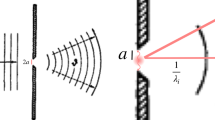Abstract
A reference system is a relation connecting observables and their mathematical represententions. The principle of general relativity assures that any sort of coordinate system can be used to describe physical phenomena. Thus, any reference system is only a convention, There is no absolutely true reference system. Instead, people seek for a best reference system, whose meaning may differ thus need to clarify, Taking an example from Earth rotation, we discuss how to find such a best reference system. The definition of the best system will change as scientific understandings deepen and computational environments develop. Therefore, we can not stop improving reference systems. However, when replacing an existing widely-spread system, one must take great care to minimize the inconvenience caused by its transition, especially the inconvenience which users might endure. The Standards Of Fundamental Astronomy (SOFA) project being conducted by the IAU WG on Astronomical Standards has the opportunity to ease this troublesome task. The World Wide Web (WWW) will be a main device to realize the project, namely to provide working standards including reference systems to the world.
Similar content being viewed by others
References
Capitaine, N.: 1996, “Precession-Nutation: Theory, determinations and analysis”, Earth Rotation, Reference Systems in Geodynamics and Solar System, Journées 1995 (N. Capitaine, B. Kolaczek, S. Debarbat, eds), Warsaw, 39–44.
Fukushima, T.: 1995, “Report of the IAU WGAS subgroup on standard procedures”, Highlights of Astronomy 10.
HMNAO and USNAO: 1961, Explanatory Supplement to the Astronomical Ephemeris and the American Ephemeris and Nautical Almanac, HM Stationery Office, London.
Hughes, J.A., Smith, C.A., and Kaplan, G.H. (eds): 1991, Reference Systems, IA U Colloquium 127, U.S. Naval Observatory, Washington, DC.
Kovalevsky, J., Mueller, I.I., and Kolaczek, B. (eds): 1989, Reference Frames in Astronomy and Geophysics, Kluwer, Dordrecht.
McCarthy, D.D. (ed.): 1989, “IERS Standards (1989)” IERS Tech. Note 3, Obs. de Paris.
McCarthy, D.D. (ed.): 1992, “IERS Standards (1992)” IERS Tech. Note 13, Obs. de Paris.
McCarthy, D.D. (ed.): 1996, “IERS Conventions (1996)” IERS Tech. Note 21, Obs. de Paris.
Seidelmann, P.K. (ed.): 1992, Explanatory Supplement to the Astronomical Almanac, Univ. Science Books, Mill Valley, CA.
Author information
Authors and Affiliations
Rights and permissions
About this article
Cite this article
Fukushima, T. Reference systems. Celestial Mech Dyn Astr 66, 107–114 (1996). https://doi.org/10.1007/BF00048829
Issue Date:
DOI: https://doi.org/10.1007/BF00048829




